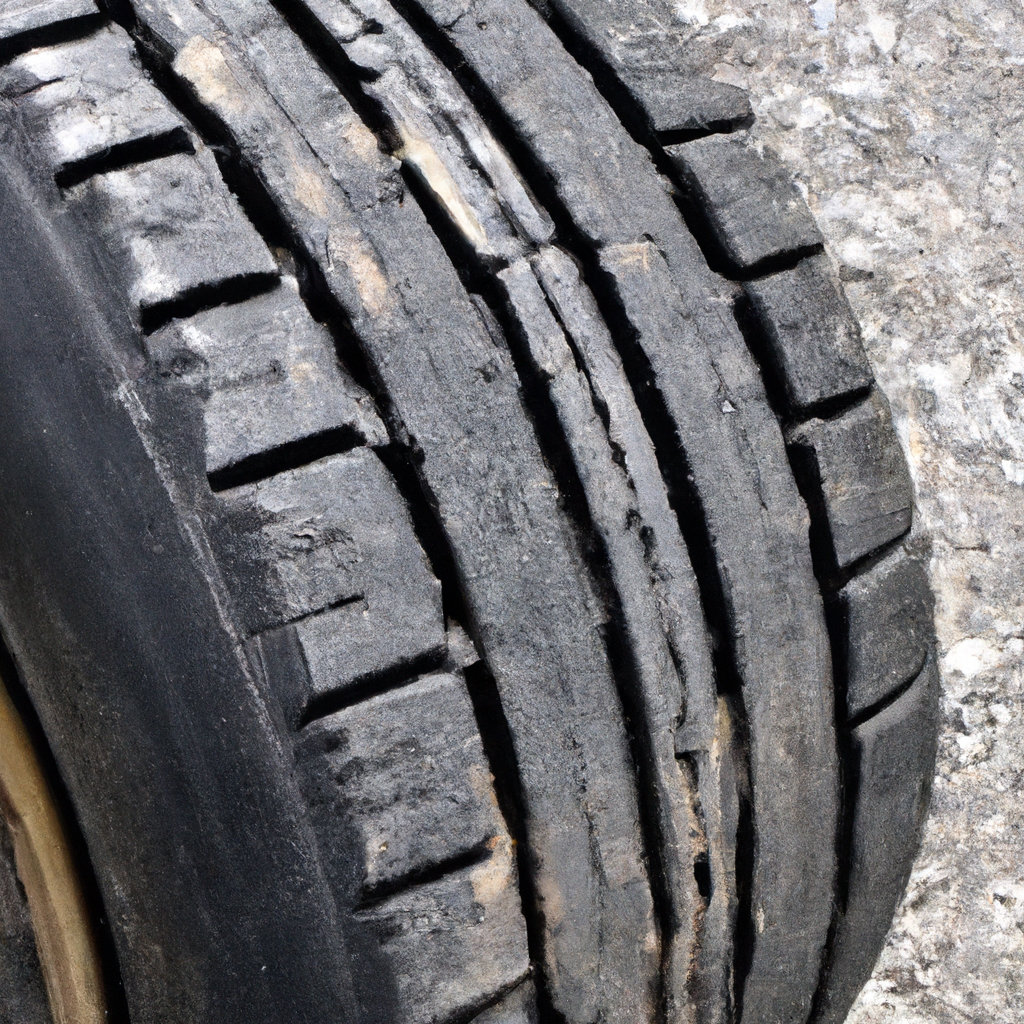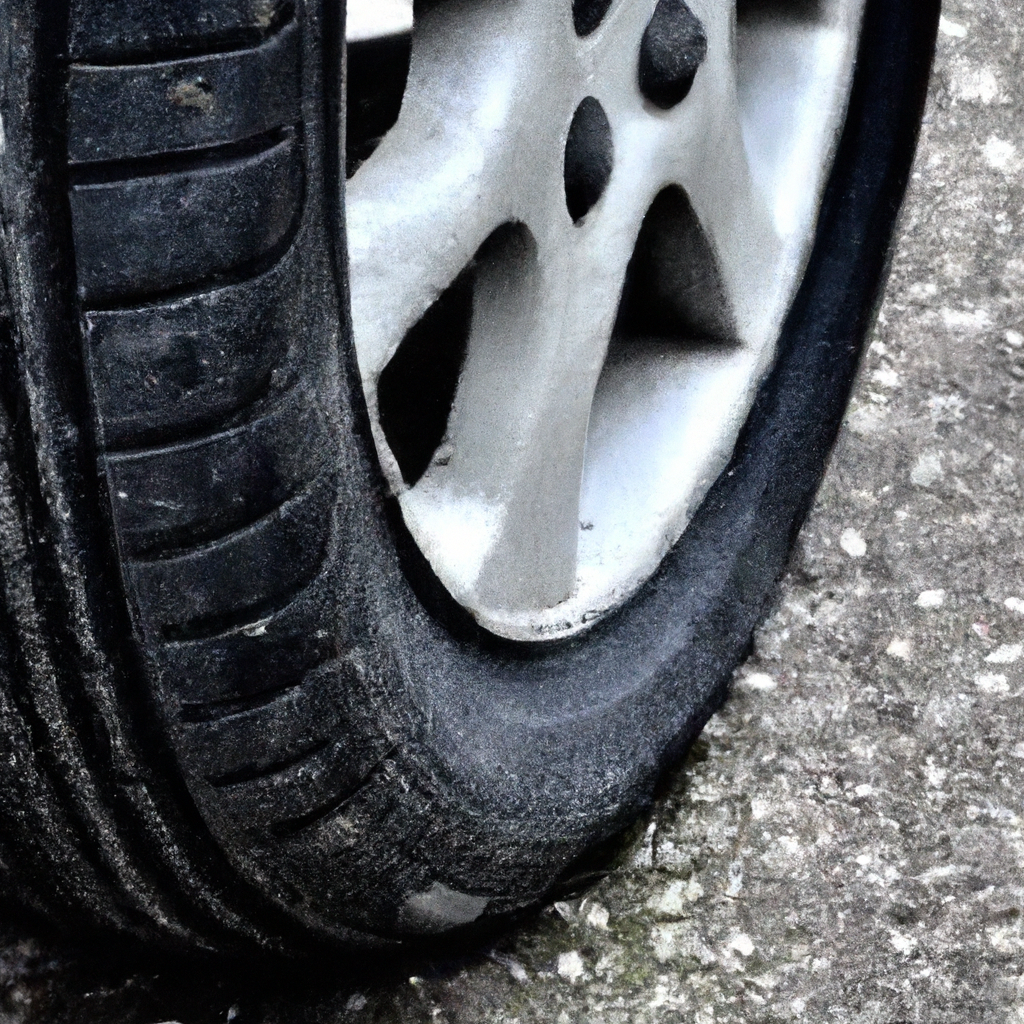You’re about to embark on an exploration into the world of run-flat tires – these innovative wonders that claim to keep you going even after a puncture. But before you take a deep dive into this realm, you can’t help but wonder, can run-flat tires really handle the rigors of daily commuting and highway driving? Well, wonder no more, because we’re about to shed some light on this burning question and reveal the truth behind these resilient rubber companions.
Overview of Run-Flat Tires
What are run-flat tires?
Run-flat tires, as the name suggests, are tires that are specifically designed to allow you to continue driving even after they have experienced a puncture or loss of air pressure. These tires are equipped with reinforced sidewalls that support the weight of the vehicle, allowing you to drive safely for a certain distance until you can reach a repair shop or a safe location to change the tire.
How do run-flat tires work?
Run-flat tires work by utilizing their reinforced sidewalls. When a puncture occurs, the sidewalls of the tire provide support and prevent the tire from collapsing, allowing you to maintain control of your vehicle. These tires are designed to be driven at reduced speeds and for limited distances, typically around 50 miles, depending on the brand and specific tire model.
Advantages of run-flat tires
One of the major advantages of run-flat tires is the added convenience and peace of mind they offer. In the event of a puncture or loss of air pressure, you do not have to immediately stop and change the tire or wait for roadside assistance. This can be particularly beneficial during daily commuting or highway driving, where unexpected incidents can cause delays and inconvenience.
Another advantage of run-flat tires is their safety aspect. With these tires, you have better control over your vehicle even in the case of a sudden tire failure. This can minimize the risk of accidents and provide a safer driving experience.
Disadvantages of run-flat tires
While run-flat tires offer numerous benefits, there are a few drawbacks to consider as well. One of the downsides is the limited driving distance and reduced speed capabilities. Since run-flat tires are designed to be driven for a limited distance and at reduced speeds, you may need to prioritize finding a repair shop or safe location to change the tire, which can be inconvenient at times.
Additionally, run-flat tires tend to be more expensive than regular tires. The reinforced sidewalls and specialized design increase manufacturing costs, resulting in a higher price tag. Maintenance and repairs for run-flat tires may also be costly, as they require specialized equipment and expertise.
Suitability for Daily Commuting
Handling and Performance
When it comes to daily commuting, run-flat tires offer several benefits in terms of handling and performance. These tires are designed to provide improved stability and control, which can be particularly useful in heavy traffic and adverse weather conditions. The reinforced sidewalls help to maintain the tire’s shape, reducing the risk of sidewall collapse and ensuring more predictable handling.
Comfort and Ride Quality
Comfort and ride quality are important factors to consider for daily commuting, and run-flat tires may have some impact in these areas. The reinforced sidewalls of run-flat tires tend to be stiffer than those of regular tires, which can lead to a slightly firmer ride. However, advancements in tire technology have made significant improvements in ride comfort, and many users report a minimal difference in comfort between run-flat and regular tires.
Durability and Longevity
When it comes to durability and longevity, run-flat tires can be a good choice for daily commuting. The reinforced sidewalls make these tires more resistant to sidewall damage, such as from potholes or curbs. This can extend the lifespan of the tires and reduce the likelihood of unexpected flats. However, it’s important to note that the actual lifespan of run-flat tires will depend on factors such as driving habits, road conditions, and maintenance.

Suitability for Highway Driving
High-Speed Performance
Run-flat tires are designed to maintain their performance and stability even at high speeds. This is particularly beneficial for highway driving, where maintaining control of your vehicle is crucial. The reinforced sidewalls of run-flat tires provide added support, allowing you to drive at higher speeds without compromising safety.
Safety and Control
Highway driving often involves higher speeds and a higher risk of tire failure. With run-flat tires, you can have peace of mind knowing that even in the event of a sudden loss of air pressure, you will be able to maintain control of your vehicle and safely exit the highway. This added safety feature can significantly reduce the risk of accidents and potentially save lives.
Emergency Situations
Run-flat tires can be particularly advantageous in emergency situations on the highway. If you experience a puncture or a blowout, run-flat tires allow you to continue driving to a safe location or reach the next available exit without having to stop immediately. This can be especially beneficial if you are in an unfamiliar or unsafe area, where stopping on the side of the road may not be ideal.
Cost Considerations
Initial Tire Cost
One of the primary cost considerations when it comes to run-flat tires is their initial cost. As mentioned earlier, run-flat tires tend to be more expensive than regular tires due to their specialized design and reinforced sidewalls. When purchasing a set of run-flat tires, you can expect to pay a premium compared to their conventional counterparts.
Maintenance and Repairs
Maintenance and repair costs are another important aspect to consider. Run-flat tires may require specialized equipment and expertise for installation and repairs, which can be more costly compared to regular tires. Additionally, if a run-flat tire sustains damage beyond repair, it may need to be replaced entirely, which can add to the overall cost.
Availability of Run-Flat Tires
While run-flat tires are becoming more popular and widely available, they may not be as readily accessible as regular tires. Depending on your location and specific tire needs, you may need to consider the availability of run-flat tires before making a purchase. It’s important to ensure that the tires you require are in stock and can be easily obtained when needed.

Compatibility with Vehicles
Appropriate Vehicle Types
Run-flat tires are compatible with a wide range of vehicles, including sedans, SUVs, and even some sports cars. However, it’s important to note that not all vehicles are equipped to handle run-flat tires. Before considering run-flat tires, it is essential to consult your vehicle’s manufacturer guidelines and recommendations to ensure compatibility and safety.
OEM vs. Aftermarket Run-Flat Tires
When it comes to run-flat tires, you have the option of choosing between OEM (original equipment manufacturer) tires or aftermarket options. OEM run-flat tires are designed specifically for your vehicle make and model and are recommended by the manufacturer. Aftermarket run-flat tires, on the other hand, are produced by third-party manufacturers and may offer a wider range of options in terms of pricing and specifications. Ultimately, the choice between OEM and aftermarket run-flat tires depends on your preferences, budget, and the specific requirements of your vehicle.
Tire Size and Load Capacity
It is crucial to select run-flat tires that are suitable for your vehicle’s tire size and load capacity. Using incorrect tire sizes or exceeding load capacity can compromise safety and negatively affect the performance of the tires. When considering run-flat tires, consult your vehicle’s user manual or seek advice from a tire professional to ensure you select the appropriate tire size and load capacity for your specific vehicle.
Installation and Replacement
Professional Installation
Proper installation of run-flat tires is essential for optimal performance and safety. Due to the specialized nature of these tires, it is recommended to have them professionally installed by trained technicians who are familiar with run-flat tire technology. This ensures that the tires are mounted correctly, the sidewalls are reinforced properly, and all necessary components are properly aligned.
Replacement Policies and Procedures
In the event that a run-flat tire needs to be replaced, it’s important to be aware of the manufacturer’s policies and procedures. Some run-flat tire manufacturers may have specific guidelines or recommendations for replacement, such as only replacing with the same brand and model, or requiring all tires to be replaced simultaneously for optimal performance. Familiarize yourself with the manufacturer’s recommendations and consult with a tire professional when replacing run-flat tires to ensure compliance with these policies.

Driving Restrictions and Limitations
Speed Restrictions
Run-flat tires typically come with speed restrictions, meaning that they are designed to be driven at reduced speeds when experiencing a puncture or loss of air pressure. These speed restrictions are imposed to ensure the safety and integrity of the tires, as driving at high speeds on a punctured or deflated tire can lead to further damage and compromise control.
Distance Limitations
In addition to speed restrictions, run-flat tires also have distance limitations. These limitations vary depending on the tire brand and model, but typically range from around 50 to 100 miles at a reduced speed. It’s important to familiarize yourself with the specific distance limitations of your run-flat tires to ensure you are aware of their capabilities in the event of a puncture or loss of air pressure.
Temperature and Weight Considerations
Run-flat tires may have limitations in extreme temperatures and when carrying heavy loads. The added heat generated when driving on a flat or deflated tire can accelerate tire damage and potentially lead to sidewall failure. Additionally, excessive weight or overloading can put additional strain on run-flat tires, compromising their performance and potentially leading to tire failure. To ensure the longevity and safety of your run-flat tires, it’s important to follow the manufacturer’s recommendations in terms of load capacity and limiting their use in extreme temperature conditions.
Run-Flat Tire Technology Advancements
Self-Sealing Tires
Recent advancements in run-flat tire technology have led to the development of self-sealing tires. These tires are designed to instantly seal punctures as they occur, preventing air leakage and allowing you to continue driving without immediate loss of air pressure. Self-sealing tires offer an added layer of convenience and further reduce the need for immediate tire changes or roadside assistance.
Airless Tires
Another exciting advancement in run-flat tire technology is the development of airless tires. These tires utilize a unique design that eliminates the need for air pressure. Instead, they use advanced materials and innovative structures to provide support and maintain shape, even when subjected to punctures or loss of material. Airless tires offer enhanced durability, reduced maintenance, and potential fuel savings, making them a promising option for the future.
Hybrid Run-Flat Systems
Hybrid run-flat systems combine the advantages of traditional run-flat tires with the benefits of self-sealing or airless technologies. These systems typically include a solid inner ring that provides structural support in the event of a puncture or loss of air pressure, while also incorporating self-sealing or airless features for added convenience and performance. Hybrid run-flat systems aim to strike a balance between durability, convenience, and cost-effectiveness.

Consumer Feedback and Reviews
Positive Experiences
Many drivers who use run-flat tires for daily commuting and highway driving have reported positive experiences. They appreciate the added safety and peace of mind that these tires offer, especially in emergency situations. Positive feedback often includes compliments on the stability, performance, and control of run-flat tires, as well as the convenience of being able to continue driving to a safe location or repair shop after a puncture.
Negative Experiences
While run-flat tires have their advantages, there are also some negative experiences reported by consumers. Common complaints include a firmer ride compared to regular tires, higher initial costs, limitations in tire availability, and potentially shorter tread life. Some drivers have also experienced difficulty finding compatible run-flat tires for their specific vehicle models, particularly for less common or older vehicles.
Overall Satisfaction
Overall, consumer satisfaction with run-flat tires varies depending on individual preferences, driving habits, and specific needs. While some drivers find great value in the benefits offered by run-flat tires, others may prefer the comfort and convenience of regular tires. It’s important for consumers to carefully consider their priorities and consult with tire professionals to determine whether run-flat tires are the right choice for their specific driving requirements.
Conclusion
In conclusion, run-flat tires can indeed be used for daily commuting and highway driving. These tires provide added safety, convenience, and peace of mind in the event of a puncture or loss of air pressure. While there are limitations and considerations to be aware of, run-flat tires offer significant advantages in terms of handling, performance, and control. Advancements in run-flat tire technology, such as self-sealing tires, airless tires, and hybrid systems, further enhance their capabilities and open up possibilities for the future of tire technology. Ultimately, the suitability of run-flat tires for your daily commuting and highway driving needs depends on your preferences, budget, and the specific requirements of your vehicle.


